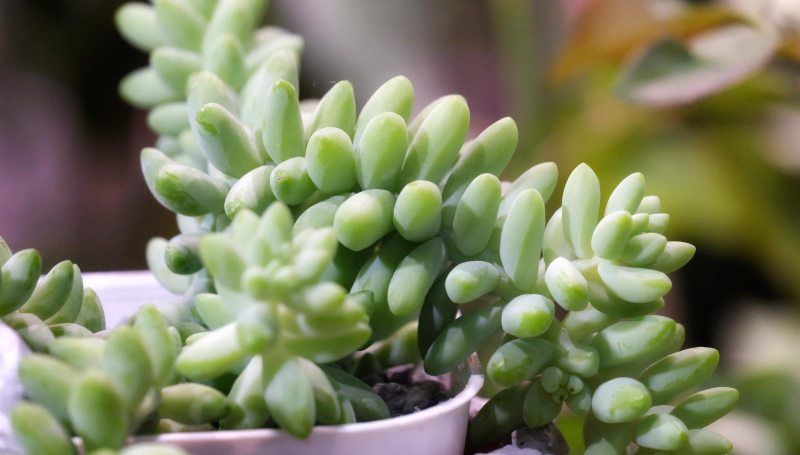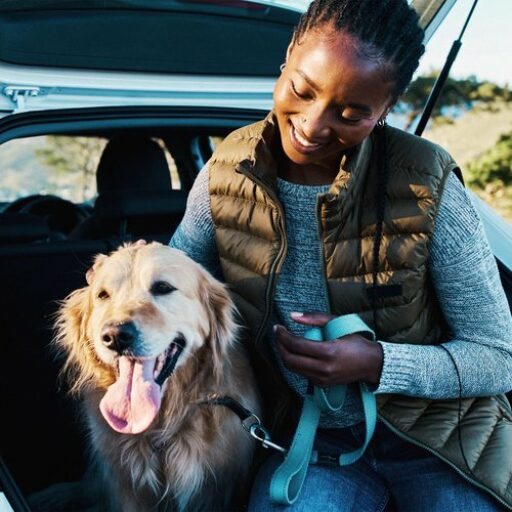Best Dog Friendly Garden Plants – From securing your perimeter to protecting your plants, here are our tips for making sure your garden is dog-friendly.
Gardens can be wonderful, stimulating places for dogs. But dogs can also cause damage by digging up plants and urinating on lawns.
Best Dog Friendly Garden Plants

Gardens also come with dangers: some plants can be poisonous to dogs, but there are other dangers too, from harmful chemicals to sharp objects.
Dog Friendly Gardening: Creating A Safe Haven For You And Your Dog: Bush, Karen: 9781845844103: Amazon.com: Books
There are many things you can do to ensure that you live in harmony with your four-legged friend, such as planting non-toxic plants, creating special dog areas and maintaining a safe garden.
Creating different paths through the yard, such as clear paths and designated play or digging areas, will keep your dog motivated. Different surface textures can be exciting underfoot, and plants like salix and ornamental grasses dance and move and provide entertainment.
Deterring dogs can damage young plants or plants with delicate stems by digging or walking through them. Plant established perennials and choose strong plants such as nepeta, astilbe and hardy geranium (avoid
Species that can be poisonous to dogs and, confusingly, under the common name geranium). Use a good spine of strong shrubs such as viburnum roses or shrubs.
Pet Safe Flowers: Non Toxic For Cats & Dogs
Many garden plants can be poisonous to dogs. These include chrysanthemum, buttercup, narcissus, daphne, delphinium, foxglove, hydrangeas, oak, tomato, wisteria and yew (Taxus baccata). If you notice worrying symptoms and think your dog may have swallowed part of a plant, take your pet to the vet. Watch our video on plants poisonous to dogs.
Dogs can damage floors and borders, so create a designated area for playing or digging, using sand or bark. To prevent a dog from crossing your boundaries, you can create paths through them, or create clear boundaries, such as a low box. Raised beds are also a good option.
Even if you have a dog, you can still have a beautiful garden; Many plants are not dangerous to dogs. These include marigolds, asters, camellias, roses, sunflowers, elaeagnus, centaurea (cornflower), impatiens and calendula.

Some dogs dig under fences or escape through holes in fences, so make sure the bottom limits are secure. Dogs can jump incredibly high, so make sure your fence is at least six feet high if you have a medium-sized dog. Please keep the gates secure at all times.
Toxic Plants For Your Pets, A Visual Guide
Keep an eye on your dog and make sure he doesn’t eat snails or slugs. Avoid using inorganic snails, as they are poisonous to all wildlife. Worms can be caught by eating slugs, snails or frogs. Symptoms include difficulty breathing, coughing, lethargy and bleeding more than usual.
Sheds can contain harmful chemicals and sharp tools. Make sure they are always properly closed.
Avoid using chemicals such as inorganic snail pellets. These can be harmful if your dog eats a snail or slug. Find out how to treat snails organically. And don’t add other things to water features or ponds because dogs will be tempted to drink from them.
Like chocolate, this byproduct of the chocolate industry can be harmful if eaten – and the smell of chocolate is disgusting. Use other mulches, such as bark chips.
Best Pet Friendly House Plants 2024
Compost bins containing food scraps can be attractive to dogs and may contain contents that can harm dogs. Some foods, such as avocados, grapes, raisins and onions, can be harmful, so make sure they stay out of the trash.
Pudding on lawns can cause yellow spots. Train your dog not to pee on the lawn, or not to wash the area afterward. Find out more about dog urine on lawns.
Prevention is better than cure If you suspect that your dog has eaten a plant, slug or snail in the garden and there are signs of illness, do not hesitate to take him to the vet.

Subscribe today for £19.99 per 6 issues and get our 2 for 1 entry ticket and picnic blanket.
Plants Poisonous To Dogs: 10 Plants Toxic To Pups
The July issue of BBC Gardeners’ World magazine is on sale now, buy online or in stores now. A playful geometry divides this patio into dining and seating circles. The rounded, carved granite deck is ideal for sitting and dining in the backyard, lined with easy-care plants that are all soft and strong enough to stand up to dogs that might run around the place without planting without a sidewalk. A thick, dwarf Atlantic white cedar (Chamaecyparis thyoides ‘Heather Bun’) surrounds the 3-meter-wide dining room, while ornamental grasses, shrubs and perennials define the 3-meter-wide. A flowering cherry (Prunus serrulata ‘Kwanzan’) colors both circles.
Plants with soft, strong leaves, such as ornamental grasses, can withstand dogs without injury. Next to this house are large clumps of grass (Miscanthus sinensis ‘Adagio’) at the right height to provide greenery without obstructing the view from the windows. Pink feathers appear later in the summer. The grass keeps its shape all winter and needs only one shear in early spring.
Use foot-friendly paving materials, such as splinter-free bark mulch and stones. Here, a 4-inch layer of bark mulch combined with well-decomposed granite keeps the unplanned areas weed-free. With such an open space to play, the homeowner’s three dogs did not harm the garden plants.
In this front yard, the homeowner planted a lawn with vigorous uncut spring grass (Pennisetum alopecuroides ‘Hameln’) instead of grass, for lower water consumption and less maintenance. Purple smoke tree (Cotinus ‘Grace’) and river birch (Betula nigra) flank the entrance. Evergreen manzanita ( Arctostaphylos x densiflora ‘Austin Griffiths’) and Atlantic white cedar ( Chamaecyparis thyoides ‘Iceberg’) fill in near the house.
Pet Friendly Plants And Toxic Plants To Pets
If you were a dog, what would you want? Each species has a different personality. The better you can notice his special characteristics, the happier your dog will be. And the happier your dog is, the more likely you are to maintain a yard you both enjoy. This dog-friendly garden has a run, boundary control, comfortable mulch, clever plants and a piece of wood to serve as a marker.
Just like people, dogs love to bask in the sun. So at least give them a terrace or a piece of lawn to sunbathe. But remember that dogs can easily overheat, so it’s even more important to keep them cool. Here, four kitties (Lee, Lexi, Andy, and Morgan) enjoy relaxing under a gazebo in Oceanside, CA.
Dogs need exercise; driveways give them a designated place to do so, as well as a place to perform their perceptive task of checking your property line. Readers suggested sacrificing a few feet on the fence for a perimeter road to meet both needs at once. If your dogs have created their own paths through the yard, don’t try to redirect them. Instead, turn the well-worn paths into good paths. A clear space 3 feet wide is sufficient for most dogs. Place an umbrella to hide this dog if you want; pets seem to enjoy their own “secret garden”.
Dogs love to share trees, pergolas and other shade structures with their owners. But most dogs seem to consider having their own shelter, like a kennel. Here, Ozzie the Airedale has a cottage-style home, complete with flower box, in Denver.
Of The Safest Flowers For Dogs You Can Buy Or Grow
If you have Houdini and want to prevent the escape artist from tunneling under the fence, you may need to install an underground barrier made of rebar, chicken wire, or poured concrete. Here, a board-bottom fence keeps four Welsh Springer Spaniels from burrowing into a Battle Ground WA front yard.
Lucy Ball, a chocolate lab, drinks from a high-end dining room in Mill Valley, CA. The platform helps keep the area tidy and acts as storage for the owner’s garden shoes.
Hester the butt loves to explore the world from her rocky perch in the backyard of West Seattle. If you have densely landscaped areas, dogs will usually stay outside. However, most dog owners recommend additional measures: plant them in raised beds or on holes and start with plants 1 gallon or larger. Place temporary fences around new areas; if you remove it, add a rock ledge or low fence as a reminder to stay outside. Plant shrubs and perennials as ornamental grasses along the edge of the garden. Place delicate plants such as salvias in the center where they are protected. Poinsettias, holly, conifers and other popular seasonal plants that are perfect for decorating your home or giving as gifts are as cheerful a part of the holidays as cookies and stockings. But these and other common live plants during the holiday season pose a danger to curious pets who may choose to touch leaves, flowers or drink standing water. And while we don’t want to stop you from using live plants to decorate your hallways, it’s good to know which pet holiday plants are appropriate for homes with furry friends and which ones to avoid.
We asked the plant experts at The Sill for their tips on safe holiday plants that we can swap out for some of the season’s most popular ones. The proposed plants still give the color and charm that only living plants can
Front Yard Cottage Garden Make Over In North Tabor Neighborhood
Dog friendly outdoor plants, best indoor plants dog friendly, dog friendly plants that repel mosquitoes, best dog friendly plants, dog friendly indoor plants, best cat friendly indoor plants, best house plants dog friendly, dog friendly garden plants, best cat friendly plants, dog friendly mosquito repellent plants, dog friendly plants, dog friendly house plants

